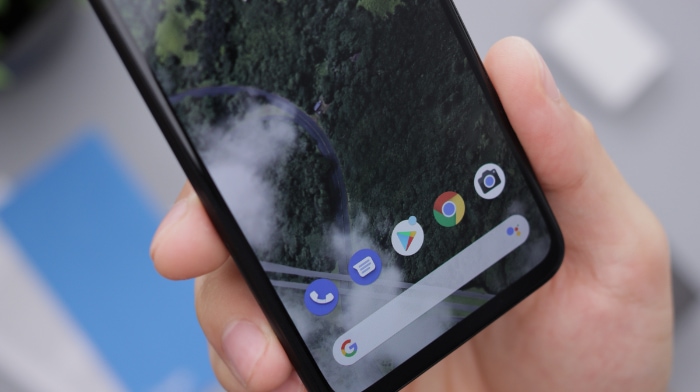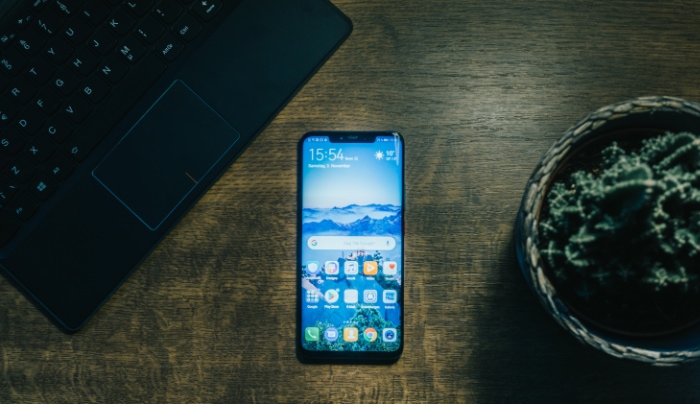Draw Over Other Apps: A Journey Into Android Functionality

In the realm of smartphones, especially within Android operating systems, the term ‘Draw Over Other Apps’ frequently surfaces. This phrase might appear somewhat cryptic, but it refers to a powerful feature essential to the rich and dynamic Android experience.
The ‘Draw Over Other Apps’ permission paves the way for increased multitasking capabilities, user convenience, and interactive app functionalities. However, as with most digital tools, this feature comes with its own set of security considerations that users should be aware of.
In this blog, we’re going to unravel what ‘Draw Over Other Apps’ means, explore its benefits, highlight potential security risks, and provide guidelines on how to manage this permission effectively. Let’s embark on this enlightening journey into one of the more subtle, yet influential aspects of Android systems.
Understanding the Concept of ‘Draw Over Other Apps’
To truly appreciate the utility and potential of this feature, we must first dive deeper into its working principle and implementation.
Defining ‘Draw Over Other Apps’
At its core, ‘Draw Over Other Apps’ is a special permission in Android operating systems. When granted, it allows an app to create a window that’s layered over the top of other apps. The overlaid window could take multiple forms, from a tiny floating icon to a full-screen overlay.
Essentially, the ‘Draw Over Other Apps’ permission gives an app the capacity to break out of its own borders and interact with the user, no matter what app they are currently using.
How Does It Work?
This feature works on the principle of ‘system alert windows.’ The app creates an ‘alert window,’ and this window is placed above all other app windows. This is why you might see such overlay windows even when you’re in a different app; the ‘alert window’ always sits at the top of the window hierarchy.
Practical Examples of ‘Draw Over Other Apps’
Perhaps one of the most recognizable examples of ‘Draw Over Other Apps’ in action is Facebook Messenger’s ‘Chat Heads’ feature. Chat Heads create an interactive bubble that stays on your screen, regardless of the app you’re currently using.
This allows you to respond to messages without having to switch apps, providing a seamless multitasking experience.
Other apps that frequently use this permission include screen recording apps, which overlay control options; floating widget apps, which offer fast access to specific functions; and real-time translation apps, which can translate text from any app you’re using.
Benefits of Using ‘Draw Over Other Apps’ Feature
The ‘Draw Over Other Apps’ feature, while seemingly technical, translates into a multitude of tangible benefits for end-users. Here are some of the most notable advantages it provides:
Enhanced User Interaction and Experience
At its heart, the ‘Draw Over Other Apps’ feature is about enhancing user interaction. It allows for continuous engagement with an app even when using other applications.
The convenience of having a floating calculator while browsing a shopping app or the ability to quickly respond to messages via chat heads without leaving the current app exemplifies this benefit.
Facilitating Multitasking
With the evolution of smartphones into powerful computing devices, multitasking has become an essential part of our digital lives. The ‘Draw Over Other Apps’ feature further empowers this aspect. It allows for seamless task switching, thus significantly improving productivity and efficiency.
Enabling New App Functions
The ‘Draw Over Other Apps’ permission also opens the door to a variety of innovative app functions. Real-time screen recording, instant translation, and accessibility services are all possible because of this feature. These functions are not just added bonuses but often crucial features that significantly enhance the utility of apps.
Customization
This feature also allows for a higher level of customization. Users can modify their device usage experience by choosing which apps can draw over others. This customization ensures that your device works the way you want it to.
Overall, the ‘Draw Over Other Apps’ feature has revolutionized the way we interact with mobile applications. It brings to the table a level of user engagement, multitasking ability, functional innovation, and customization that would not have been possible otherwise.
Security Considerations Related to ‘Draw Over Other Apps’

While the ‘Draw Over Other Apps’ feature offers remarkable benefits, it is not without its security concerns. Let’s explore the potential risks associated with this feature and how they can be managed.
Potential Security Risks
The ‘Draw Over Other Apps’ permission can be exploited by malicious apps to compromise user security. An ill-intentioned app could use the overlay feature to display fraudulent content, tricking users into revealing sensitive information.
For instance, an app could overlay a fake login screen on top of a legitimate banking app, thereby capturing a user’s credentials.
Another risk comes from the permission’s potential to obstruct critical system prompts. An unscrupulous app could display an overlay that covers a system prompt, making the user unknowingly grant it harmful permissions.
Real-World Examples of Malicious Use
One notable instance of the misuse of the ‘Draw Over Other Apps’ feature was the infamous Android malware ‘Cloak and Dagger.’
This malicious software exploited the overlay feature to trick users into granting it additional permissions, without the users being aware of what was happening.
Importance of Cautious Use and App Verification
Given these potential risks, it’s essential to be cautious when granting the ‘Draw Over Other Apps’ permission. Users should only allow trusted apps to use this feature. Moreover, before downloading an app, it’s wise to read reviews, check the app’s rating, and confirm the developer’s authenticity.
In summary, while the ‘Draw Over Other Apps’ feature provides substantial benefits, it also entails potential security risks. Users need to balance the advantages of this feature with its security implications.
Careful app vetting and cautious granting of permissions are key to leveraging the benefits of ‘Draw Over Other Apps’ while mitigating its risks.
How to Manage ‘Draw Over Other Apps’ Permission
In light of the potential security risks associated with ‘Draw Over Other Apps,’ it becomes crucial for users to know how to manage this permission effectively. Here’s a step-by-step guide for Android devices:
Accessing the ‘Draw Over Other Apps’ Menu
- Open the ‘Settings’ menu on your device.
- Scroll down and select ‘Apps & notifications’ (this may vary slightly depending on your Android version).
- Tap ‘Advanced,’ then ‘Special app access.’
- From the list that appears, select ‘Display over other apps.’
Identifying Which Apps Have the Permission
Once you’ve accessed the ‘Display over other apps’ menu, you’ll see a list of all the apps that have requested this permission. Apps are divided into two sections: those that are allowed to draw over other apps, and those that aren’t.
Managing the Permission
To change the permission for any app:
- Select the app from the list.
- On the next screen, you will see a toggle switch for ‘Allow display over other apps.’
- Toggle the switch on to grant the permission, or off to revoke it.
Remember, caution is key when managing these permissions. It’s best to only allow apps that you trust and that genuinely require this feature to function properly.
Reviewing Permissions Regularly
It’s a good practice to periodically review these permissions. New apps might be added, and existing ones might receive updates that change their behavior. Regular checks help ensure that only the necessary apps have this powerful permission.
Mastering ‘Draw Over Other Apps’ permissions will help you maintain a secure and personalized Android experience. Armed with this knowledge, you can take full advantage of this feature’s benefits while mitigating potential security risks.
Conclusion
In this ever-advancing digital world, features like ‘Draw Over Other Apps’ significantly enhance the way we interact with our mobile devices. This powerful permission has opened the door to numerous innovative functionalities, transforming our user experience and redefining the concept of multitasking.
From interactive chat heads to on-screen translation services, the range of applications is vast and continually growing. However, this feature also serves as a reminder of the constant balance we must strike between usability and security.
With the potential for misuse by malicious apps, it’s crucial for us as users to exercise caution. Careful management of permissions and a solid understanding of the apps we install are key to leveraging the benefits of ‘Draw Over Other Apps’ while minimizing the risks.
In the end, our mobile devices are tools that can be as powerful and as safe as we allow them to be. By being proactive and knowledgeable about features like ‘Draw Over Other Apps’, we can ensure that we’re using these tools to their fullest potential, while keeping our data secure.
The ‘Draw Over Other Apps’ feature serves as an example of the dynamic nature of technology – it brings both opportunities for improvement and challenges to overcome.


